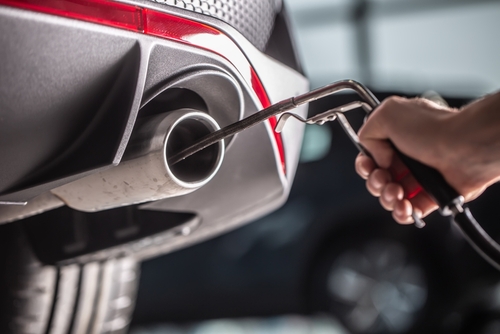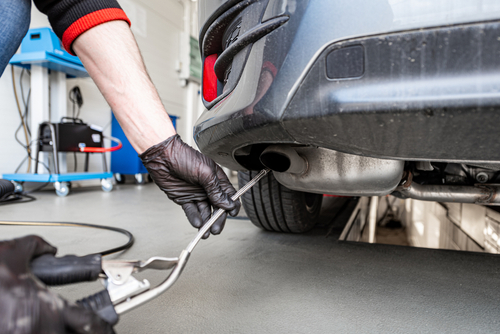
Should You Keep Your Car Service And Repair History Reports?
January 5, 2023
Importance of Regularly Cleaning Your Car’s Fuel System
March 3, 2023How to Maintain Your Car’s Exhaust System?

How to Maintain Your Car’s Exhaust System? Proper maintenance of your car’s exhaust system is as vital as checking the oil and tires to ensure it operates safely and efficiently. The exhaust system removes harmful gases from the engine, optimizes fuel efficiency, decreases emissions, and protects the car engine from damage.
This article covers the components of the exhaust system, how best to maintain it, and the signs to look out for to reduce the chance of problems developing.
How to Maintain Your Car’s Exhaust System?

An overview of the exhaust system
A car’s exhaust system comprises a series of components, the most important of which are the exhaust manifold, catalytic converter, muffler, and tailpipe.
Taking each at its simplest, the exhaust manifold directs carbon monoxide, nitrogen oxides, and hydrocarbons from the engine into the catalytic converter, where they are converted into water and carbon dioxide before being expelled into the atmosphere through the tailpipe.
The muffler, also known as a silencer, reduces engine noise by dissipating and redirecting sound waves, so they cancel each other out.
Damage prevention
You can take a few basic steps to reduce wear and tear on your car’s exhaust system. First, avoid driving too fast over speed bumps or on rough or poorly maintained roads, as it is likely to subject the car’s components to excessive force and potential damage.
Second, don’t overload your car because that will not only place extra strain on the suspension but also force the exhaust system to work harder, compromising efficiency and increasing the chance of damage.
Third, be sure not to idle for long periods as not only is it harmful to the environment, but it means the engine runs at a lower temperature which can lead to the formation of condensation within the exhaust system. If the moisture builds up, it can result in rust, corrosion, and, ultimately, component failure.
Finally, and at the other end of the spectrum, steer away from sudden acceleration to maximize the longevity of your vehicle’s exhaust. Speeding up in a short space of time forces the exhaust system to work harder to convert and discharge fumes, a demand that will cause its constituent parts to deteriorate prematurely.
However, some drivers will find it less exciting; maintaining a consistent speed is the better course for those who wish to prolong the life of their car’s exhaust system and meet their model’s best possible fuel economy.
Inspections and maintenance
Could you conduct regular inspections? Even if you aren’t an expert, you can pick up on many issues simply by carrying out basic checks.
Look for damage – including bumps and scratches – to the pipes and muffler, evidence of leaks, or the appearance of rust. Pay attention to sounds coming from the exhaust system: anything out of the ordinary, such as rattling or humming, is likely to indicate a problem that needs addressing.
Has your fuel efficiency decreased? If so, it may be a clue that something’s awry with your catalytic converter and needs cleaning or replacing. It should be obvious that anything more extreme, such as dashboard warning lights or the exhaust releasing smoke or unusual smells, suggests more fundamental problems requiring prompt attention.
What to do

Along with issues caused by damage, the functioning of your car’s exhaust system can be compromised by the accumulation of carbon debris, which restricts airflow and leads to engine damage.
The best way to prevent this problem is to regularly flush the entire system with a chemical cleaner added to the gas tank to loosen deposits. As with all repairs, a qualified mechanic is best placed to do this for you, but if you are confident, patient, and have the right tools, you can do it if you refer to your car’s operating manual.
However, it’s worth bearing in mind that while carrying out your repairs will save you money and allow you to learn more about your car, it can also be technically demanding, take a considerable amount of time, and occasionally be dangerous.
If you have any doubt whatsoever, your best course of action is to hire the services of an experienced professional mechanic.
How to Maintain Your Car’s Exhaust System? – Conclusion

To conclude, proactively maintaining your car’s exhaust system, doing regular and frequent inspections, and taking timely corrective action when problems come to light are your keys to ensuring your vehicle runs as well as possible for as long as possible.



